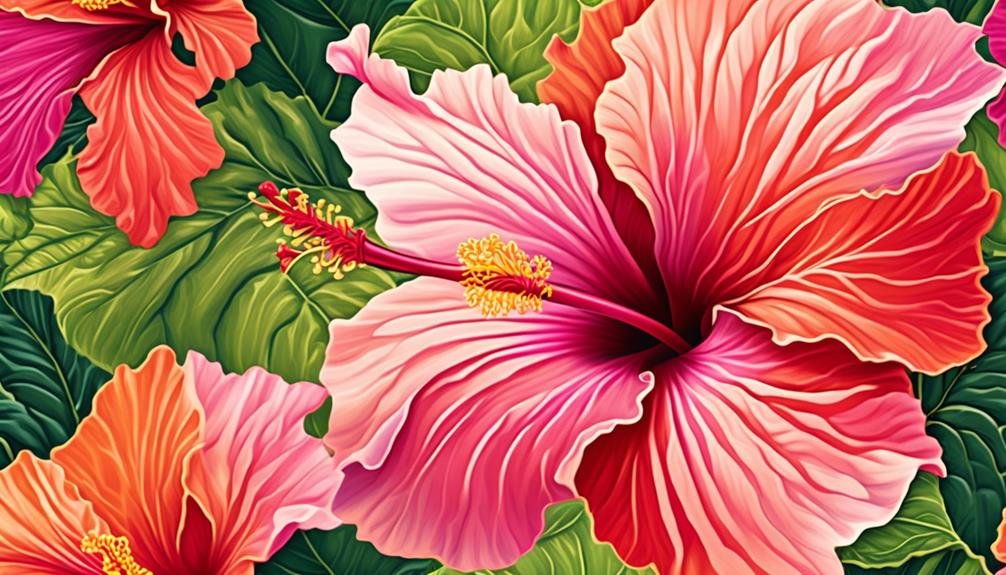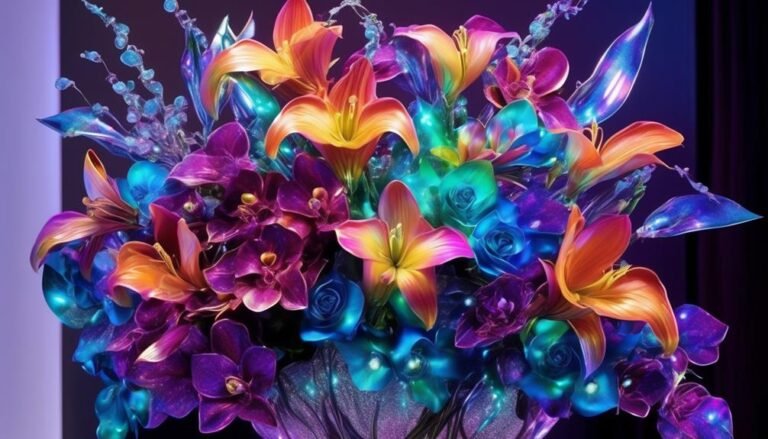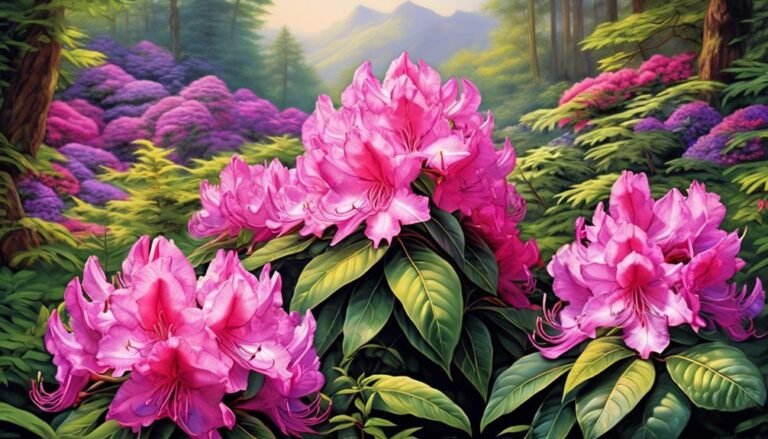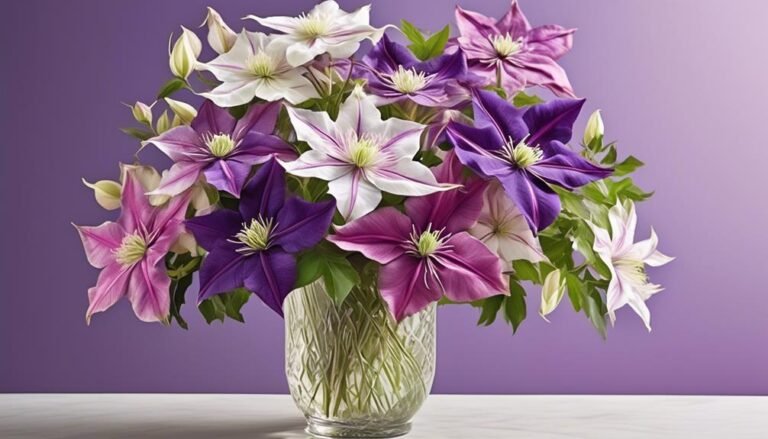Popular Types of Florist Flowers – Hibiscus
Hibiscus is a visually stunning flower with a fascinating botanical background. Its scientific name is Hibiscus rosa-sinensis, and it comes in a wide range of colors and varieties, including red, pink, yellow, and white. This beloved florist favorite is available year-round, making it a versatile choice for any occasion.
Seasonal Availability:
Hibiscus is a tropical flower, so it thrives in warm climates. However, it can also be grown in containers and brought indoors during colder months. This means that hibiscus is generally available year-round, making it a popular choice for florists and flower enthusiasts.
Care Tips:
To keep hibiscus looking its best, it's important to provide the right care. This includes placing the plant in a sunny location, watering it regularly, and providing well-drained soil. Hibiscus plants are also sensitive to cold temperatures, so it's important to protect them from frost.
Fascinating Facts:
Did you know that hibiscus flowers are not only beautiful but also edible? They can be used to make teas, jams, and even salads. Additionally, hibiscus is not just a pretty face – it has been used in traditional medicine for its potential health benefits.
In conclusion, hibiscus is a beloved florist favorite with year-round availability and a wide range of colors and varieties. By providing the right care and attention, you can enjoy the beauty of hibiscus in your home or garden.
Scientific Name
Hibiscus, a genus of flowering plants in the mallow family, derives its scientific name from the Greek word 'hibiskos.' This plant has a rich history in traditional medicine, with its flowers, leaves, and roots containing beneficial compounds known for their medicinal properties.
In various cultures, hibiscus has been used to treat conditions such as high blood pressure, liver disorders, and fever. The symbolism of the hibiscus varies across different cultures, with the flower being offered in Hindu worship as a symbol of respect and devotion, and in Hawaiian culture, symbolizing delicate beauty and the fleeting nature of life.
The hibiscus has captivated the imagination of people worldwide, both as a botanical remedy and as a symbol of cultural significance.
Background History
Hibiscus cultivation has a fascinating history that dates back to 18th century China. The plant later spread to other parts of Asia and was brought to Europe by explorers, where it gained popularity for its ornamental beauty and potential medicinal properties.
Hibiscus holds deep cultural significance in many countries, such as being associated with femininity and delicate beauty in China, serving as the national flower of South Korea symbolizing the fleeting nature of glory, and being given as a welcoming gift in Hawaii.
Throughout its history, hibiscus has been revered for its diverse uses, from ornamental beauty to medicinal remedies, making it a captivating plant with rich cultural importance.
Physical Description
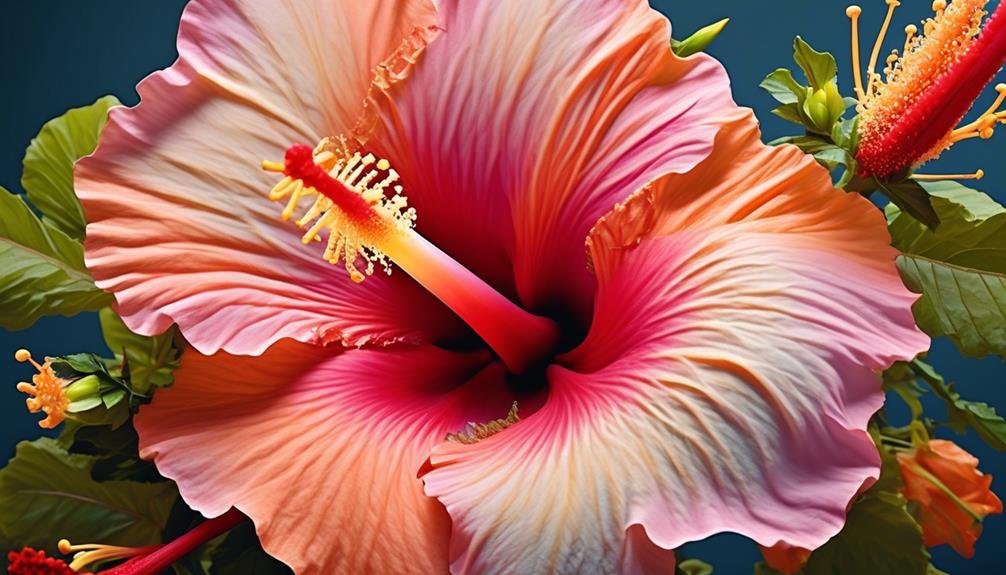
Hibiscus flowers are known for their stunning appearance, with trumpet-shaped blooms and vibrant, colorful petals. Their stamen, or center, adds to their allure, often displaying striking contrasts. These flowers can grow up to 4 feet in height, making them an eye-catching addition to any garden or indoor space.
When growing hibiscus indoors, it's important to note that they've broad leaves and tall stature, adding a touch of tropical elegance to indoor spaces. Their multicolored varieties offer a wide range of options for indoor gardening enthusiasts. Adequate sunlight and a consistent watering schedule are essential for their optimal growth and blooming.
Understanding the physical attributes of hibiscus flowers not only enhances appreciation for their beauty but also aids in their cultivation. Whether adorning gardens or indoor spaces, the unique physical features of hibiscus flowers make them a popular choice among florists and gardening enthusiasts alike.
Colours and Characteristics
Hibiscus flowers showcase a stunning array of colors and distinct characteristics, making them a popular choice for floral arrangements and indoor decor.
- Color Varieties: Hibiscus flowers boast a vibrant spectrum of colors, including red, pink, and stunning two-toned varieties. Their contrasting centers and prominent stamens create visually appealing displays, perfect for creating memorable floral arrangements.
- Distinct Characteristics: The elegant appearance and vibrant hues of hibiscus flowers make them ideal for gifting, enhancing the visual appeal of food and drinks, and adding a touch of color and elegance to any setting. When arranging hibiscus flowers, it's important to avoid overcrowding and consider using foliage such as ferns to complement and add texture to the arrangements.
Culturally significant in many parts of the world, hibiscus flowers require proper cultivation techniques for maintaining their distinct characteristics and vibrant colors. Adequate sunlight, well-draining soil, and regular watering are essential for their upkeep.
Understanding the diverse color varieties and distinct characteristics of hibiscus flowers allows for the creation of captivating and visually appealing displays in floral arrangements and indoor spaces.
Varieties Available

Hibiscus flowers come in a variety of colors and patterns, such as red, pink, and two-toned options. These vibrant flowers are known for their large, showy petals in the case of red hibiscus, delicate, ruffled edges for pink hibiscus, and striking contrast for two-toned varieties.
Hibiscus flowers aren't only visually appealing but also have practical uses. They're commonly used in herbal teas and infusions due to their natural tartness and potential health benefits. Additionally, in various cultures, hibiscus flowers hold symbolism and cultural significance, often used in ceremonies and celebrations to represent delicate beauty and joy.
Seasonal Availability
Hibiscus flowers are typically more abundant in the warmer spring and summer months due to their tropical nature. In cooler climates or during the winter season, hibiscus flowers may be less readily available, as they're sensitive to cold temperatures. When planning events or decorations during off-season periods, consider using artificial hibiscus flowers or explore alternative tropical blooms that are more readily available.
To preserve hibiscus flowers during cooler climates, keep them in a warm, well-lit environment away from drafts or cold air. Placing the stems in warm water and misting the petals can help maintain their freshness for a longer period.
If hibiscus flowers are needed during the off-season, consider sourcing them from regions with warmer climates or working with floral suppliers from tropical areas to ensure availability for specific events or occasions. Understanding the seasonal availability of hibiscus flowers and considering preservation techniques can help ensure the vibrant beauty of these tropical blooms throughout the year.
Care Tips
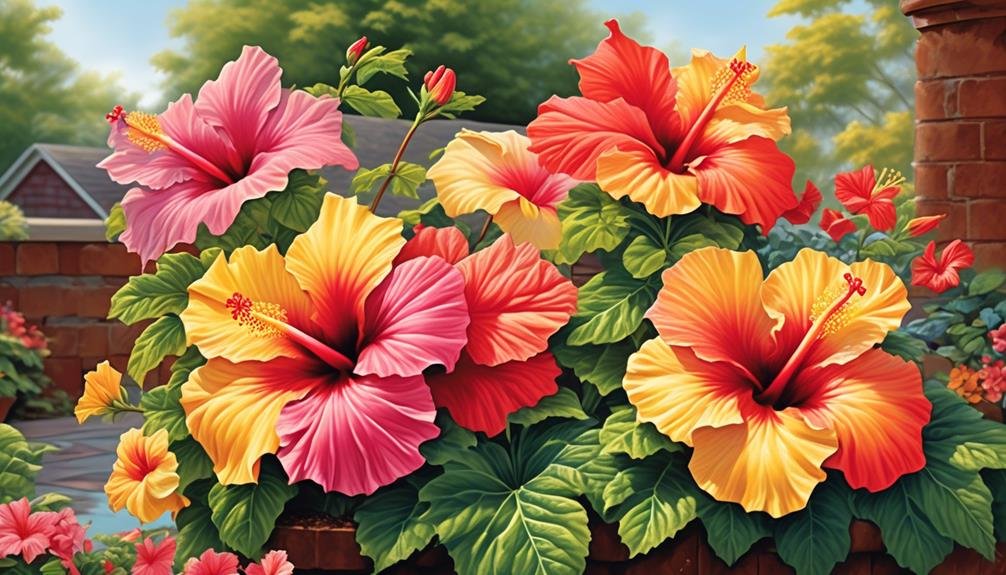
Hibiscus Care Tips for Optimal Growth and Blooming
Temperature:
Maintain a temperature range of 13-27°C for optimal growth and blooming. Extreme cold or heat can adversely impact hibiscus plants' health and blooming.
Watering:
Water regularly while allowing the compost to slightly dry out between watering sessions to avoid root rot or wilting.
Humidity:
Increase humidity, especially when hibiscus plants are in bud and flower, by misting the leaves or using a pebble or gravel tray to control humidity levels.
Sunlight:
Provide ample sunlight in a south or west-facing aspect to ensure robust growth and prolific blooming.
Feeding:
Feed hibiscus plants weekly while in flower to support healthy growth and continuous blooming. Avoid sudden environmental changes to prevent plant stress and issues like leaf yellowing or dropping.
Can Hibiscus and Hyacinth Flowers Be Used Together in Floral Arrangements?
Yes, hibiscus and hyacinth flowers can be used together in floral arrangements. Both types of florist flowers are vibrant and beautiful, adding color and fragrance to any bouquet. Their contrasting shapes and sizes can create visually appealing and unique arrangements for any occasion.
Conclusion
Hibiscus flowers, also known as Hibiscus rosa-sinensis, are a popular choice for florists because of their vibrant colors, long-lasting properties, and non-toxic nature.
These flowers come in a variety of colors and can be used in floral arrangements as well as decorative garnishes for food and drinks.
With proper care, hibiscus flowers can last for up to 7 hours without water, making them a versatile and beautiful option for floral displays.
Plus, hibiscus flowers are a great addition to any garden and are known for their medicinal properties, including being used in herbal teas to support overall health and well-being.
